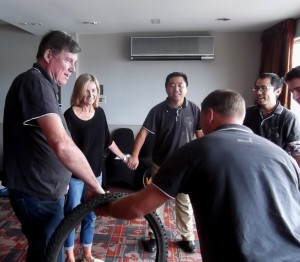In early July, Thomas Harhoff and Peter Sansom attended the combined International Federation of Municipal Engineering (IFME) World Congress and the Institute of Public Works Engineering Australia (IPWEA) International Conference.
Covering asset management, road and bridge technology, water management and sustainable practices, among other topics, the conference brought together speakers from all over the world.
Peter Sansom found the paper on bridge rehabilitation and maintenance by Barry Wright and Rudolph Kotze extremely valuable. The paper outlined potential risk-based approaches for key elements of the asset management process for bridges and looked at important risk areas together with their identification and mitigation to ensure limited resources are directed to maintenance and strengthening activities that will maximise the investment return for the asset owner. The most important lesson Peter took away from this was, ‘sweat the small stuff; if you can manage one small component of an asset, you can extend the life of that structure.’
The stand-out sessions for Thomas were Australian, Adrian Sykes’s, discussion of Water Sensitive Urban Design in the city of Charles Sturt where their primary objectives are flood mitigation and stormwater reuse; and Nick Meeten’s paper on the energy potential in wastewater. With a temperature range between 10 and 15 degrees Celsius year round, wastewater has the capacity to provide 10 to 20 percent of the heating and cooling needs for commercial buildings within a city, with greater efficiency than current solutions.





